The terrifying story of the 'hell hound'
- Published
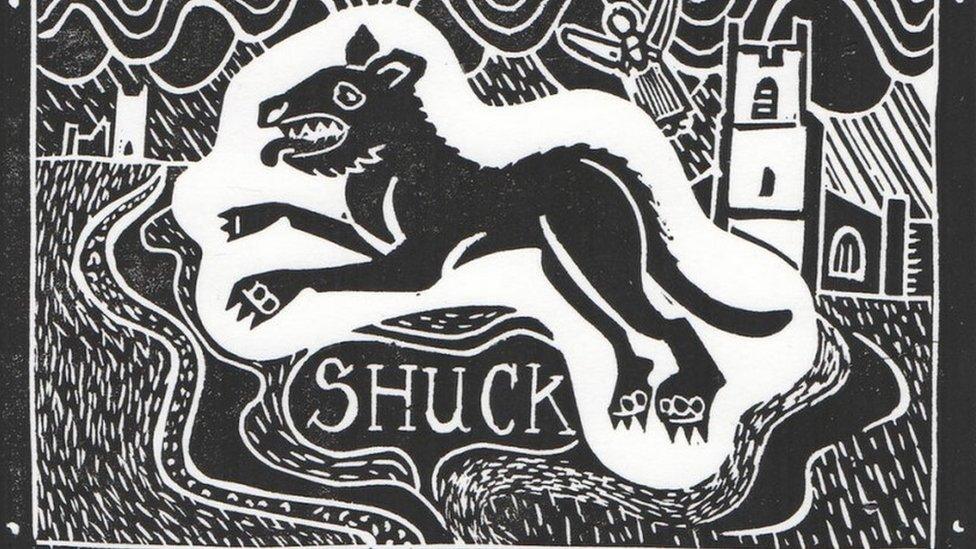
The dog is called Black Shuck in East Anglia, Hairy Jack in Lincolnshire and Barghest in Yorkshire and Lancashire
Terrifying tales of "hell hounds" - ferocious black dogs, eyes glowing and teeth bared as they wreak vengeance on the population - have been the stuff of legend for centuries. It has cemented the place of these mythical beasts in English folklore, but how and why have accounts of their terrifying marauding spread so far and wide?
In 1577, according to one particularly poetic account, a snarling beast broke into a church, rampaged through the congregation and bit the necks of two people - who promptly dropped dead.
Having traumatised the churchgoers of Bungay in Suffolk, the mythical dog - known as Black Shuck - next cropped up on the county's coast at Blythburgh.
Again, it targeted worshippers - bursting though the doors of Holy Trinity Church before killing a man and boy and causing the steeple to collapse.
The beast left scorch marks on the church door, according to legend.
Photographer and researcher Nick Stone is mapping, external similar stories and has so far collected between 400 and 500 accounts.
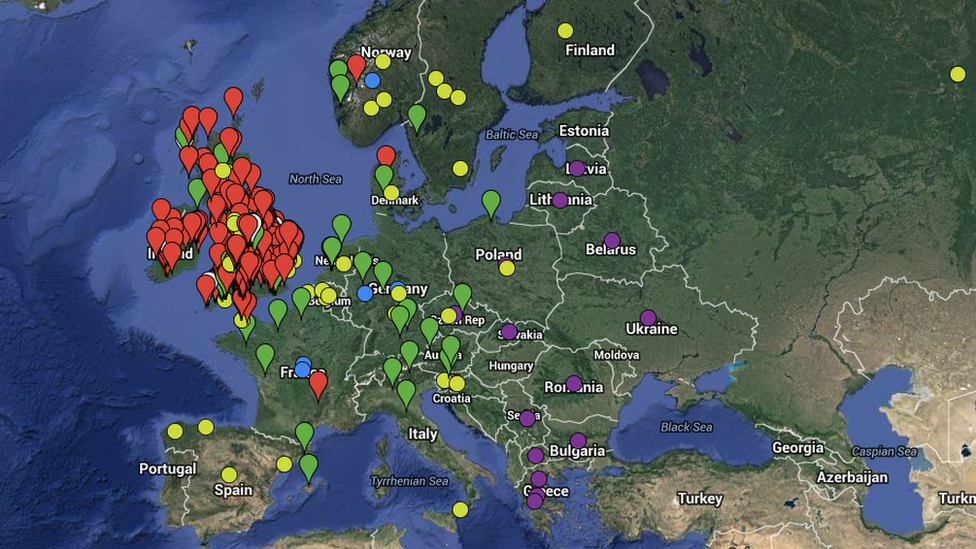
Hundreds of people have contributed stories
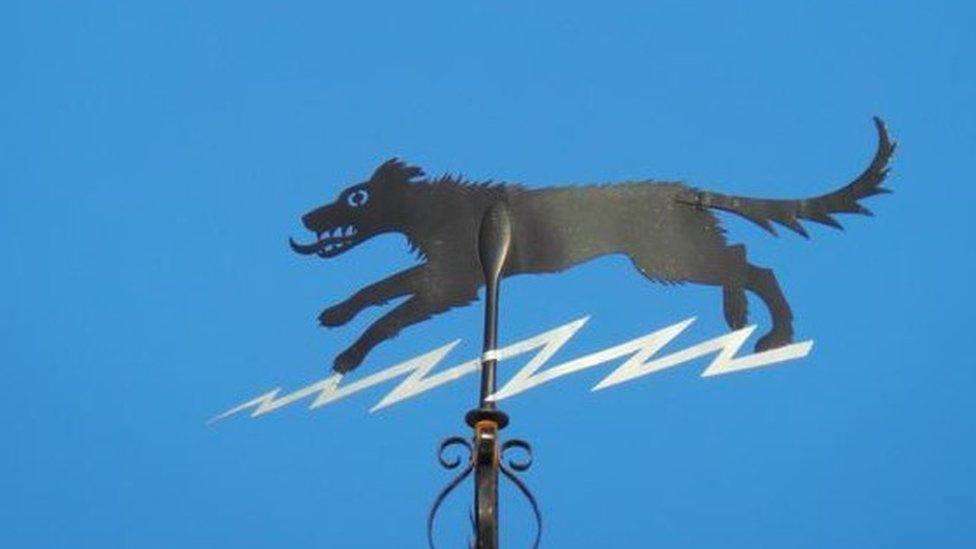
The first written record of the "hell hound" dates back nearly 1,000 years
Stories added to the map speak of lonely pets pining for dead masters and packs of hounds led in "wild hunts" by men on horseback.
Hell hounds were also reported to appear at 17th Century witch trials.
But not all accounts of Black Shuck depict the beast as a ferocious predator.
In Littleport in Cambridgeshire, a shadowy canine is said to have turned protector, rescuing a local girl from an attempted rape by a friar.
According to legend, the dog died in the struggle and its ghost was left to wander through the countryside.
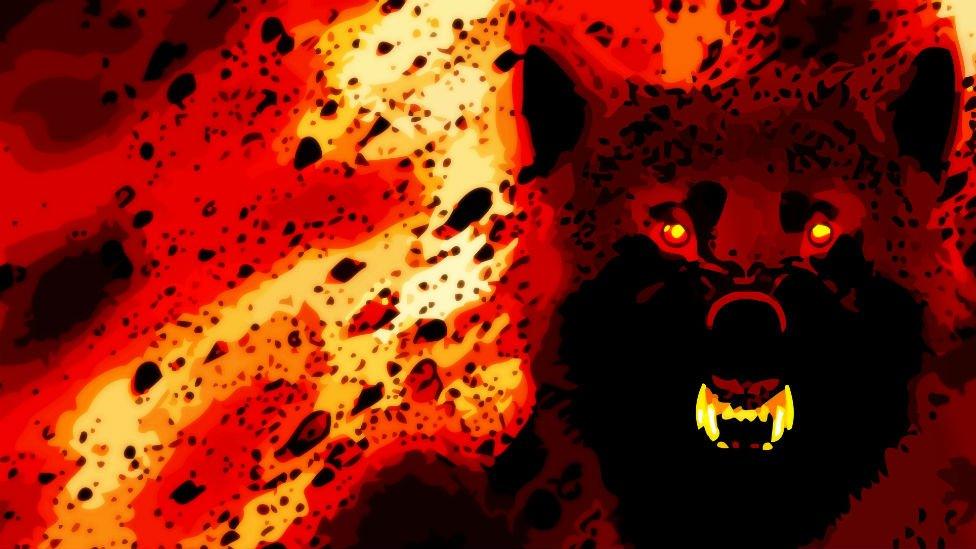
Author Arthur Conan Doyle is believed to have been inspired by the hell hound stories
There are similar stories of a black dog under other names along the east coast of England.
Norwich-based Mr Stone, who began the interactive mapping project in August, as part of Public Archaeology 2015, external, said: "Living in Norfolk, it's probably the most prevailing piece of kids' scary folklore."
While the stories largely spread through word of mouth, the earliest written record of the "hell hound" is found in the 11th and 12th Century Peterborough version of the Anglo-Saxon Chronicle.
The chronicler wrote that "reliable witnesses" had seen packs of dogs, "jet black with eyes like saucers and horrible", led in a "wild hunt" by men on horseback, travelling through the woods stretching between Peterborough and Stamford.
Lorna Richardson, a researcher in public archaeology at the University of Umeå in Sweden, said folklore was often overlooked when assessing the importance of a landscape or place.
"There are lots of different takes on this dog legend and, as Nick's map has shown, it spreads into Europe and back in time."
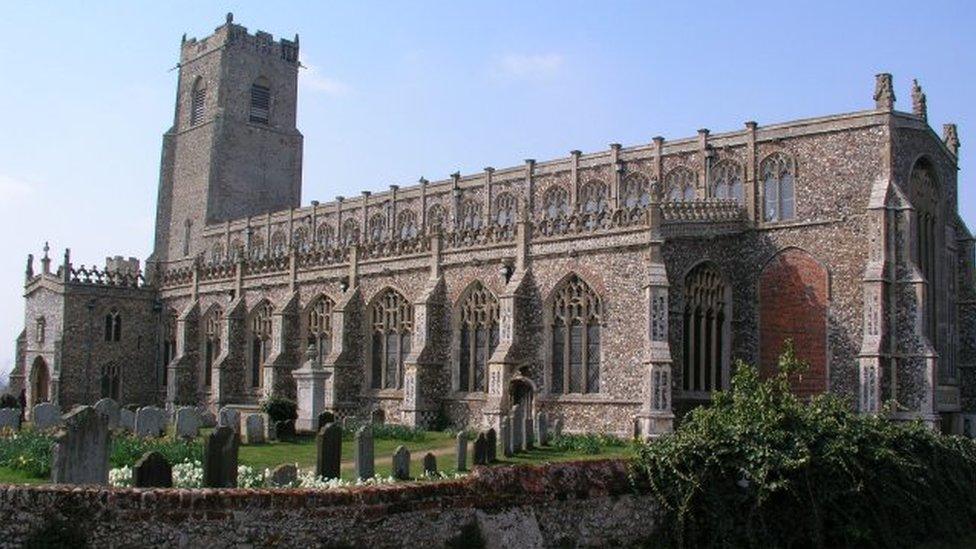
Black Shuck was blamed for Blythburgh's church steeple collapsing